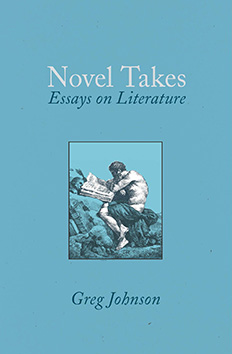The Hunt for ‘Test Bias’
Jared Taylor, American Renaissance, May 1992
In the brave new America of obligatory equality, the results of standardized employment tests are an irritant that will not go away. Asians and whites consistently outscore blacks and Hispanics. What to do? Kill the messenger — or at least discredit him.
Police and fire departments have traditionally given written examinations to candidates for promotion to sergeant or captain. Blacks cannot pass them at the same rate as whites. The only permissible explanation for this is that the tests are “culturally biased.” It is difficult to imagine just what form of cultural bias could creep into a policing exam given to professional police officers, but no matter. Bias has been declared the culprit, and efforts to “correct” it have taken an exotic turn.
The city of San Francisco spent nearly $1 million over a period of five years trying to devise a test that minorities could pass in equal numbers to whites. It couldn’t do it. Recently, a judge ordered that 22 non-whites be promoted over the heads of whites who had gotten higher scores on the shiny new, presumably bias-free test. [Ralph King, Judge bars race as sole factor in promotions, WSJ, June 10, 1991, p. B5A.]
For ten years, New York City police battled law suits claiming that their test for sergeant was biased against blacks and Puerto Ricans. In 1989, the Department hit upon the idea of inviting non-white officers to help design the test, thus eliminating bias. It didn’t work. Less than two percent of the blacks who took it passed; 95 percent of all promotions to sergeant were non-Hispanic whites. The department was hit with another round of lawsuits. [David Pitt, Despite revisions, few blacks passed police sergeant test, NYT, Jan. 13, 1989, p. 1.]
The New York City police have also tried to replace the written test with a video-taped test, since asking that candidates read and write might be biased against blacks. Black and Puerto Rican groups waited until the results of the test were announced before they decided that, sure enough, the video must have been biased, too. [Lawrence H. Fuchs, The American Kaleidoscope, (Hanover: University Press of New England, 1990), p. 451.]
Since no one has managed to design tests that do not give “biased” results, the Houston Fire Department worked out a novel, court-approved method to eliminate bias after the fact. In 1991, it gave a 100-question test for promotions, with a passing grade of 70. Whites, as expected, got better scores than non-whites. The court agreed that the Department could then study the results and throw out questions that minorities were more likely than whites to get wrong. The reasoning was that if they got them wrong, the questions must have been biased, even if no one could figure out why.
The Department farmed the test scores out to a consulting firm, which duly eliminated 28 questions. This meant that 32 people who had originally passed now had failing grades. They were 24 whites, four blacks, three Hispanics, and one Asian. After the test was rescored, 13 people who had originally failed were found to have passed: five blacks, four Hispanics, and four whites. Since eight minorities had been knocked off the pass list, but nine had been added to it, the exercise resulted in a net gain of one. Naturally, the people who had been knocked off the pass list, including the minorities, were hopping mad, but the Houston fire chief got one more minority promotion out of the exercise. [Eric Hanson, Firefighters see red as scores on promotion exam changed, Houston Chronicle, Oct. 3, 1991.]
This was hard luck for the blacks who got the right answers on questions that were supposed to be “biased” against them; and it was a piece of good luck for the whites who got the wrong answers on questions that were supposed to be “biased” in their favor. Probably no one in Houston was so annoyingly logical as to suggest that any test questions that whites were more likely than non-whites to get wrong should also be eliminated, since they might be culturally biased against whites.
The federal government has had no better luck designing an examination that blacks and whites can pass at equal rates. In the 1970s, it used something called the Federal Service Entrance Examination. Although blacks got extra points for being black, their pass rates were still disproportionately low. At great expense, the government designed a new test, called the Professional and Administrative Career Examination (PACE), that was going to be free of bias. Apparently it wasn’t; 42 percent of white applicants passed it but only 13 percent of Hispanics and 5 percent of blacks. So, in 1982, the government scrapped PACE and gave up testing. It instituted a system of interviews and evaluations that made it easier for the government to hire non-whites. In 1987, a federal judge ruled this new process “arbitrary and capricious,” but since it resulted in a satisfactory number of minority hires, it continued to be used. [Frederick A. Lynch, Invisible Victims, (New York: Praeger Publishers, 1989), pp. 29f.]
Six hundred thousand dollars later, the government produced yet another set of tests, which were given for the first time in June, 1990. These have less academic content than PACE, and call for a considerable amount of subjective “biodata.” The results of the test were to be scrutinized for a period of five years, with an option to scrap it if it proved to be “biased.” [Judith Havemann, Revised a behest of minorities, new civil service exams ready, LA Times, April 22, 1990. Robert G. Holland, Chronicles, March 1991, p. 9.]
The State Department has had similar fun with the Foreign Service Entrance Examination. Up until the 1960s, aspiring diplomats got extra points if they could speak foreign languages. Then someone pointed out that few blacks speak anything but English. The American diplomatic corps quickly become perhaps the only one in the world that gives no credit for foreign languages. By 1979, the Department was even more worried about a dearth of blacks, so it created a “near pass” category for minorities on its entrance examination. Although 70 is the passing score for whites, blacks have been admitted with scores in the mid-50s. [James Workman, Gender norming, The New Republic, July 1, 1991, p. 16.]
Progress cannot be held back.















